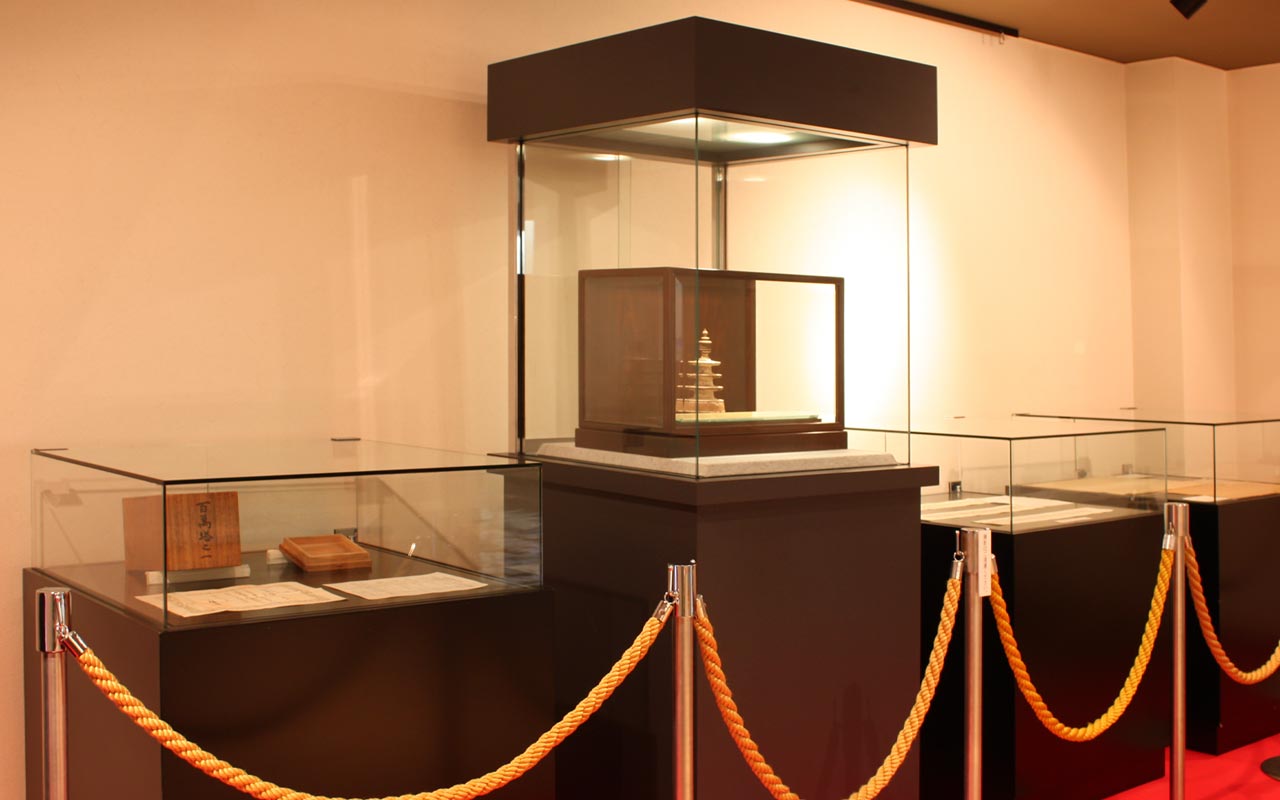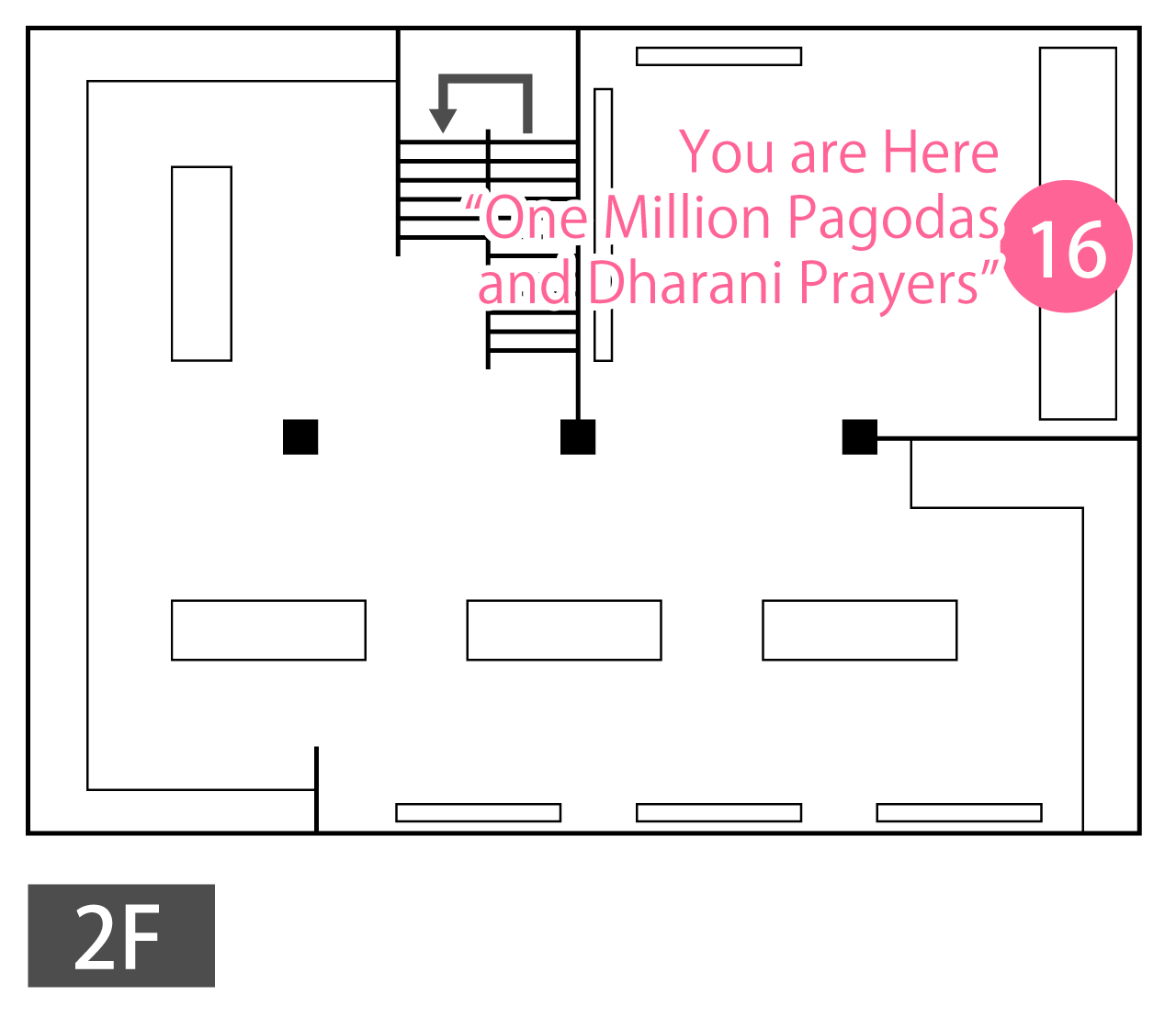 |
[16] One Million Pagodas and Dharani Prayers |

|
The techniques and know-how used by Echizen's paper makers to research and revive various types of paper, as well as to develop various new products, has also played a role in the preservation and research of Japan's Cultural Properties.
|


|
The One Million Pagodas and Dharani Prayers contains the Dharani Sutra, said to be the world's oldest printed material: some 1,200 years old.
In 1985, the Nara National Research Institute for Cultural Properties, an organization that performs research pertaining to ancient Japanese art, architecture, and other works, commissioned the third Iwano Heizaburo, the successor to Iwano Heizaburo, the man who had reproduced the ancient mashi paper, to investigate the paper that the Dharani Sutra was printed on, in order to restore it to its original condition.
Given its state, it was difficult to judge whether the Dharani Sutra was originally printed using copperplate or woodblock printing. It was one of the only remaining examples of the world's oldest remaining printed material.
The paper was said to be made of hemp or paper mulberry, and dyed with Amur cork tree sap to prevent insect damage, and the size varied based on the printing plate (based on a number of finished examples), with an average width of 5.5 centimeters (about 2 inches) and an average length of 25–27 centimeters (about 10 inches).
In 1985, the third Iwano Heizaburo, the successor to the man who had reproduced the ancient mashi paper, Iwano Heizaburo, worked to reproduce the paper used to print the Dharani Sutra, and investigated this piece of paper.
|

| Floor Map |

|

|



